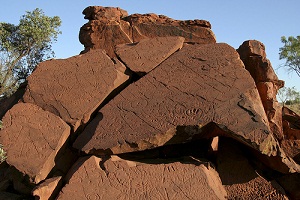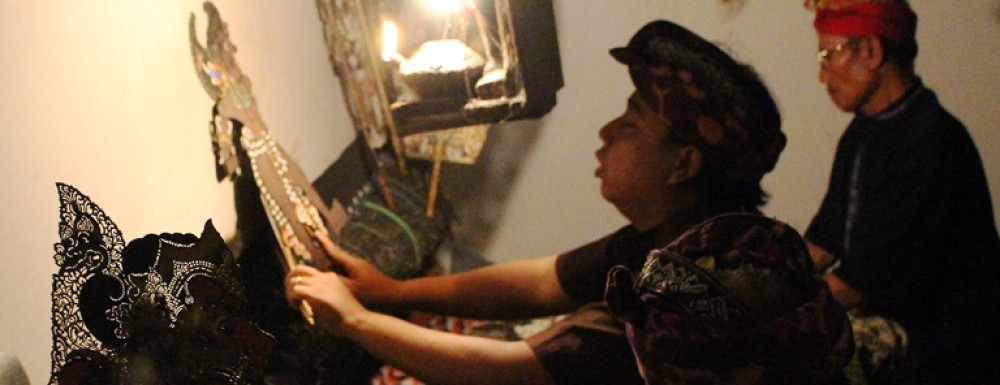Text by GEOFF VIVIAN
TWO Australian National University researchers have used a high-tech isotopic method to estimate the potential age of the Burrup Peninsula’s rock art, based on the rate at which the rock surface erodes.

“Our measurements indicated that some of the surface erosion rates at the Burrup are amongst the lowest in Australia and indeed the world”—Prof Pillans. Image: Paul Williams
Geologist Professor Brad Pillans and nuclear physicist Professor Keith Fifield employed cosmogenic radionuclide measurements of the isotope beryllium-10 on rock surfaces at the world-famous Pilbara site.
They concluded that the oldest carvings could be 20- 30,000 years old, or even older, which implies they were possibly made when the site was a range of low hills about 100km inland from the glacial-period coastline.
This corroborates the opinion of archaeologist Dr Ken Mulvaney, who noted the absence of fish and other marine animal images in the older, more weathered petroglyphs.
The artists who made the petroglyphs probably used stone tools to carve into the hard granophyre rock, to a maximum depth of about one centimetre.
They removed the outer dark red layer of iron/manganese oxide known as rock varnish, exposing the lighter red-brown layer known as rind, but leaving the unweathered grey stone core untouched.
“The longer a rock is exposed … to cosmic rays the more beryllium-10 builds up at the surface of the rock,” Prof Pillans says.
“It does build-up below the surface but it’s exponentially less common as you get to increasing depth because the cosmic rays get stopped by the rock.
“We actually know the production rate of beryllium-10 at the earth’s surface pretty well … and assuming a long-term balance between the rate of … production of the beryllium-10 and surface erosion it’s possible to back-calculate an erosion rate.
“Although beryllium-10 itself is radioactive, it decays away at a known rate, and this is easily factored into the erosion rate calculations.
“Our measurements indicated that some of the surface erosion rates at the Burrup are amongst the lowest in Australia and indeed the world, as low as .15 of a millimetre per thousand years – not quite as low as in Antarctica, but that’s a special case.
“The dominant weathering process is surface flaking, with flakes maybe a millimetre or two breaking off the rock intermittently … a bit like rust on steel: put fresh steel outside and it gets a coating of rust which flakes away.”
He says further research, beyond the scope of his study which only measured natural erosion rates, would be necessary to assess the possibility of chemical erosion from industrial emissions.
This article was first published in Science Network WA
Read 5748 times
